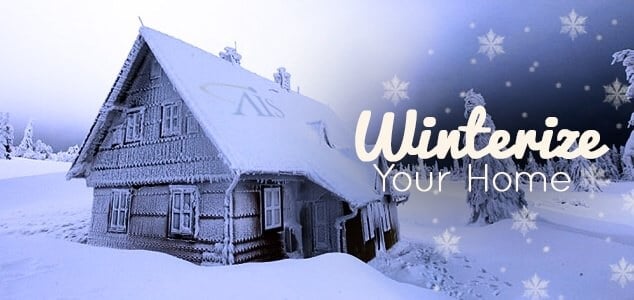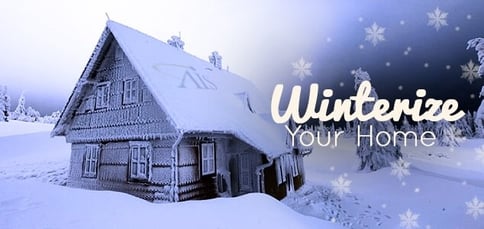
Every year millions of Americans pack their fall to-do lists, like picking apples or pumpkins, drinking pumpkin-spiced lattés, and taking hikes to enjoy the fall foliage.
 While you’re enjoying autumn’s gifts, we recommend adding one more thing to your agenda: prepping your home for winter. While this endeavor isn’t necessarily fun, it can potentially save you a lot of stress, frustration, and money once Jack Frost makes his debut.
While you’re enjoying autumn’s gifts, we recommend adding one more thing to your agenda: prepping your home for winter. While this endeavor isn’t necessarily fun, it can potentially save you a lot of stress, frustration, and money once Jack Frost makes his debut.
Here are some tips to recommend to your clients and to bring up on homeowners insurance calls.
1. Prune plants and trim trees.
Once the summer growth cycle is over, prune plants and tree branches near your house. Pruning can help your plants grow back healthier next spring and can also help prevent damage to your home. Some plants do not respond well to fall pruning, so make sure to some research before you start cutting.
If possible, you should aim to keep limbs and branches at least 3 feet from your house so moisture won’t drip onto roofing and siding. And take special care to cut back any dead branches hanging over your house, as these could potentially fall and cause damage or injury during icy or windy weather.
2. Winterize your lawn mower.
Never leave untreated gas in your mower over the fall and winter months. Within just 30 days, gas begins to degrade, which can damage internal engine parts and lead to a defunct mower.
Add a fuel stabilizer to your mower tank to prevent gum and varnish build-up within your engine’s fuel system and keep it running smoothly. You can even add fuel stabilizer to your gasoline can to keep spare gas in good condition over the winter.
3. Clean your gutters.
Fall leaves might be beautiful to look at, but they also have a habit of clogging your gutters. And if your gutters and downspouts are clogged with leaves, twigs, and debris, rainwater and melting snow may not drain properly, leading to water damage on the interior and exterior of your home.
Blocked gutters can also cause water to pool around the foundation of your house, which can crack your foundation when it expands and freezes in cold weather. So once the leaves are done falling, plan to make your gutters a priority. You’ll help prevent costly projects down the road.
4. Disconnect yard hoses from outdoor faucets.
You'll want to store outdoor hoses. Keeping the put away in the winter not only extends its life, but also helps protect your home’s plumbing. If you leave the hose attached to your outdoor spigot, a small amount of water can stay lodged in the pipe near the faucet and will quickly freeze. Since water expands as it freezes, this can crack or even burst your pipes, leading to incredibly costly repairs.
Experts also recommend closing the inside shut-off valves and draining the spigot before the first frost.
5. Tune your furnace.
There’s nothing worse than your furnace suddenly not working once cold weather hits. Get ahead of any potential issues by scheduling an appointment with a heating and cooling professional. They can help ensure your system is functioning properly and give it a proper tune up.
While calling a pro will cost money, they can help save you money in the long run by catching and fixing small problems before they turn into big ones. Plus, a pro can warn you if your furnace is nearing the end of its lifespan, so you have time to save up for a new one.
6. Check for drafts.
Want to save money on your heating bill this winter? Walk around your home to check for drafts. Common problem areas include electrical outlets, switch plates, baseboards, fireplace dampers, and, of course, door and window frames. According to the U.S. Department of Energy, heat loss through windows is responsible for 25–30% of heating energy use.
Once you’ve determined where unwanted cold air is leaking in, you'll want to seal the leak with caulk, spray foam, or a draft stopper, depending on the size of the crack. Filling cracks is relatively simple and inexpensive, and you’ll thank yourself when your first heating bill arrives for the season.
Tackling these six essential home maintenance projects this fall will set your clients up for success this winter.
What other fall home maintenance tips do you have? Let us know in the comments!






